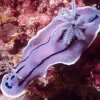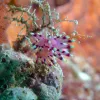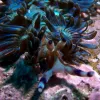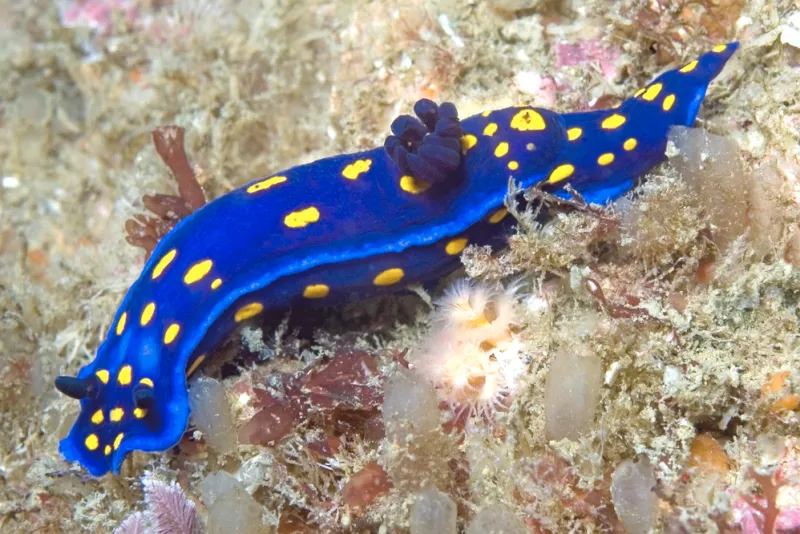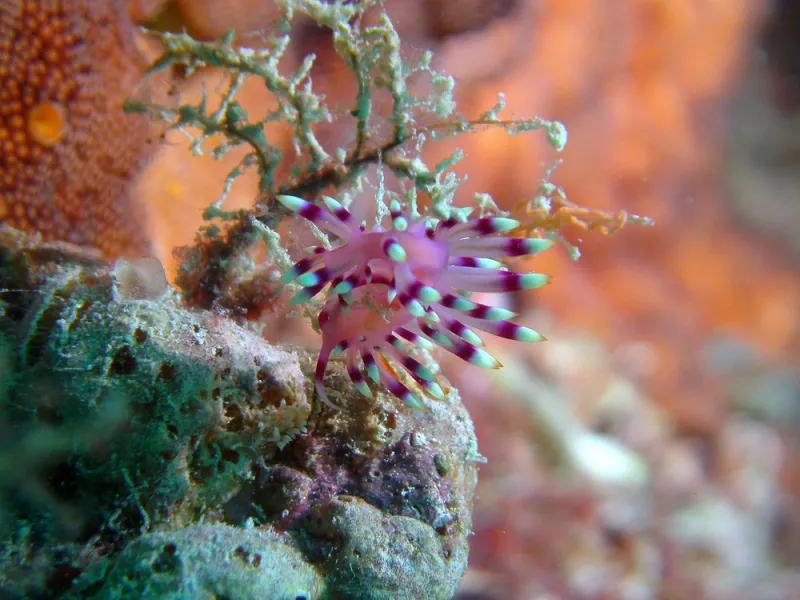Nudibranchs are mollusks that have evolved from shelled ancestors. They're often noted for their vibrant colors and striking forms (like the reddish-orange Coryphella verrucosa shown here) that help to dissuade predators from taking a bite, important since they lack the protection of a shell.
A Collage of Nudibranch Colors
Nudibranchs are a kind of sea slug, and their 3000 species are found from the poles to the tropics in both shallow and deep water. Though they often only reach two centimeters in length, they are famous for their spectacular color patterns. Nudibranchs get their name from greek (nudi) and latin (branch) words meaning "naked gills". There are two main types of nudibranchs: dorid nudibranchs look fairly smooth, with a tuft of feather-like gills toward the back of the animal that are used to breathe. Aeolid nudibranchs instead breathe with organs called cerata covering their backs.
Unlike most snails, nudibranchs lack a shell that can be used for protection from predators (they shed their shells as larvae). This means that nudibranchs must defend themselves in other ways. Some nudibranchs use camouflage to blend in with their environments, while others use very bright and contrasting colors to signal to predators "watch out." Many aeolid nudibranchs have evolved the ability to ingest and reuse stinging cells from their prey.



